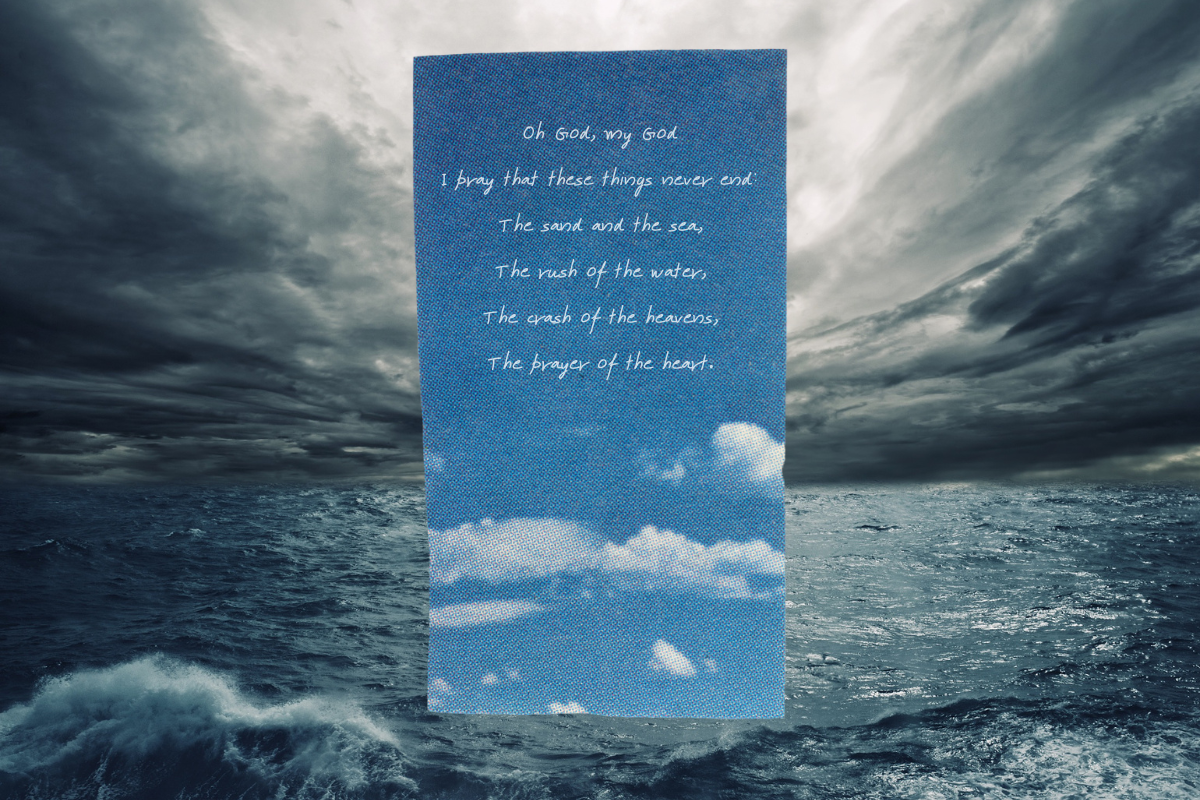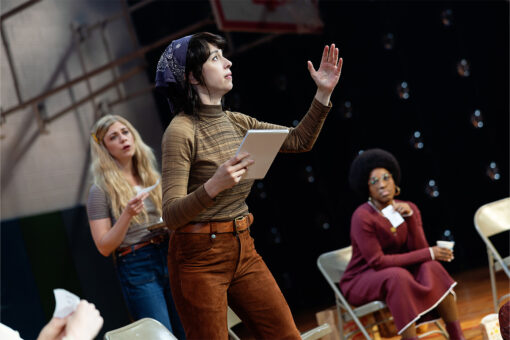This past summer, while walking along the ocean-facing cliffs near my grandparents’ home in Southern California, two things kept looping through my head: the lyrics to Hannah Senesh’s poem-turned-song, “Eli, Eli,” and the news headlines I’d recently seen about ocean temperatures in Florida nearing bathwater levels of warmth.
Oh God, my God
I pray that these things never end:
The sand and the sea,
The rush of the water,
The crash of the heavens,
The prayer of the heart.
The poem is formally titled “A Walk to Caesarea,” but is commonly known by its first words, “Eli, Eli.” Senesh wrote it in 1942 as a Hungarian Jewish refugee in Mandatory Palestine, a year before she joined a Jewish unit of the British army as a paratrooper, and two years before her capture, torture and execution at the hands of Nazi-allied Hungary. She was 23 years old, which happens to be the age that I am now. The courage that it must have taken to return to Nazi territory as a resistance fighter takes my breath away.
I’d always thought of “Eli, Eli” as Senesh turning away from humanity up until the last line. I reasoned that there were probably many things about humanity that she would have liked to see end, and maybe she focused on water to contrast that. But as I watched clumps of seaweed rise and fall with the flow of the ocean on my summer walk, the poem began to take on new meaning. I felt like the ocean was breathing. In a way, it was: after all, seaweed produces the majority of oxygen in Earth’s atmosphere.
When I think about Senesh’s water imagery as a possible metaphor for life on Earth, I imagine that the rhythms of the natural world must have been comforting during her short life. Even if nothing else remained, the waves would always be there.
As I continued walking along the cliffs, I thought about what the rush of the water would be without the life it sustained. Before heading out on my walk that morning, I’d read one of the latest news articles reporting on a summer filled with climate disaster after climate disaster. In Florida, oceans climbed to record temperatures, confusing tourists and jeopardizing the sea creatures who depended on the water. The temperatures threatened coral in particular, which in turn threatened the countless creatures who depend on coral and the creatures who depend on those creatures, including us. An ocean empty of all that life might be an ocean that has ended, even if the water itself remained. I wondered if Senesh had been talking about humanity all along.
One of my favorite things about Jewish prayer is that we say the same words over and over, but allow the context and our personal convictions to bring new meanings. An obvious example of this is the Kaddish: in one section of the service, it’s used as an upbeat call of praise, while in another section, the same words are solemnly recited by mourners. Of course, current events can influence what we think about during prayers, too: a prayer for peace might take on new meaning depending on what is happening in our lives or around the world.
It is easy, when faced with an onslaught of devastating headlines about the climate, to feel like everything is doomed. I’ve even seen headlines about this phenomenon: they call it climate despair. But I’ve been thinking about how we battle despair. To me, prayer allows for the opportunity to find intention and connection to something beyond myself. Senesh’s poem is a beacon in a time that would be so easy to fall into despair.
Although “Eli, Eli” is not technically part of Jewish liturgy, I think its prevalence in Jewish spaces and powerful imagery earns it an honorary place. With that in mind, I found myself channeling Senesh’s words — that these wonders of nature never end — into a new prayer while I looked out onto the sea.
When I think about the sand and the sea never ending, I think about protecting the seaweed that breathes on the surface of the waves. I think about ensuring the wellbeing of all the creatures who live in the water and along the shore. I think about safeguarding the shorelines that so many people depend on for relaxation and livelihood and protection from nature.
When I think about the rush of the water, I think about preserving the aquifers and rivers and lakes that so many depend on for drinking and growing plants. I think about the clear stream I splashed in growing up, and I think about how nearly all bodies of water in the United States are too polluted to drink unfiltered.
When I think about the crash of the heavens, I think about rainfalls miraculously preventing drought, but I also think about catastrophic floods and hurricanes upending lives. I wonder if something can end by happening too much.
All this thinking makes me wonder about humanity’s place in the rhythms of Earth, our water world. As much as we have the potential to cause harm and damage, we also have the potential to repair. Senesh’s poem could have focused entirely on nature. But instead, she ends the poem praying that prayers never end. She did not want to live in a world without human hope and thought and spirituality.
The last line of the poem is the most powerful to me, especially in the context of our current climate crisis. In Hebrew, the line refers to t’filah, which is usually translated as prayer but comes from the root palal, which means to judge or intervene. While it is true that the sand and the sea and the water and the heavens could keep going without us, I feel the same as Senesh did when writing this poem: I don’t want the human spirit to end.
We owe it to our world, and to each other, not to let our despair win. Instead, using Senesh’s words as a guide, we can open our hearts to the possibility of hope and the bravery to intervene.



